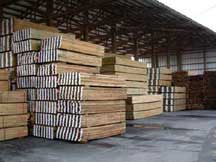What is Treated Wood

Treated wood is manufactured by pressure injection of a preservative into wood. The longevity of common species of wood can be increased significantly through this process. When properly treated and used, wood can resist damage from termites and decay fungi for decades.
Typical applications for this wood include:
Decks, fences, walkways, retaining walls, other landscaping, docks, bulkheads, utility poles, piling, signposts, sound barriers, railroad crossties, bridges, sill plates, outdoor furniture, picnic tables, platforms, shelters, permanent wood foundations, and general construction lumber exposed to the elements.
First performed commercially in the latter half of the 1800s, wood treating technology has been refined and improved over the years. Nevertheless, the basic process has remained substantially unchanged – wood is moved into a horizontal steel cylinder, or retort; an initial vacuum pulls air from wood cells (initial air pressure is often used for railroad ties); the cylinder is flooded with liquid preservative; pressure pumps force the liquid into the wood replacing the air; at the completion of the process, excess preservative is drained from the cylinder for later reuse in the closed loop treating process; and wood is removed from the cylinder.
Several, but not all, species of wood can be effectively treated.
Standards for the industry - appropriate wood species, preservative composition, depth of preservative penetration, amount of preservative retained in the wood for different intended uses, etc. -- are established by the American Wood Protection Association (AWPA). The International Building Codes require the use of treated wood in certain building applications.
